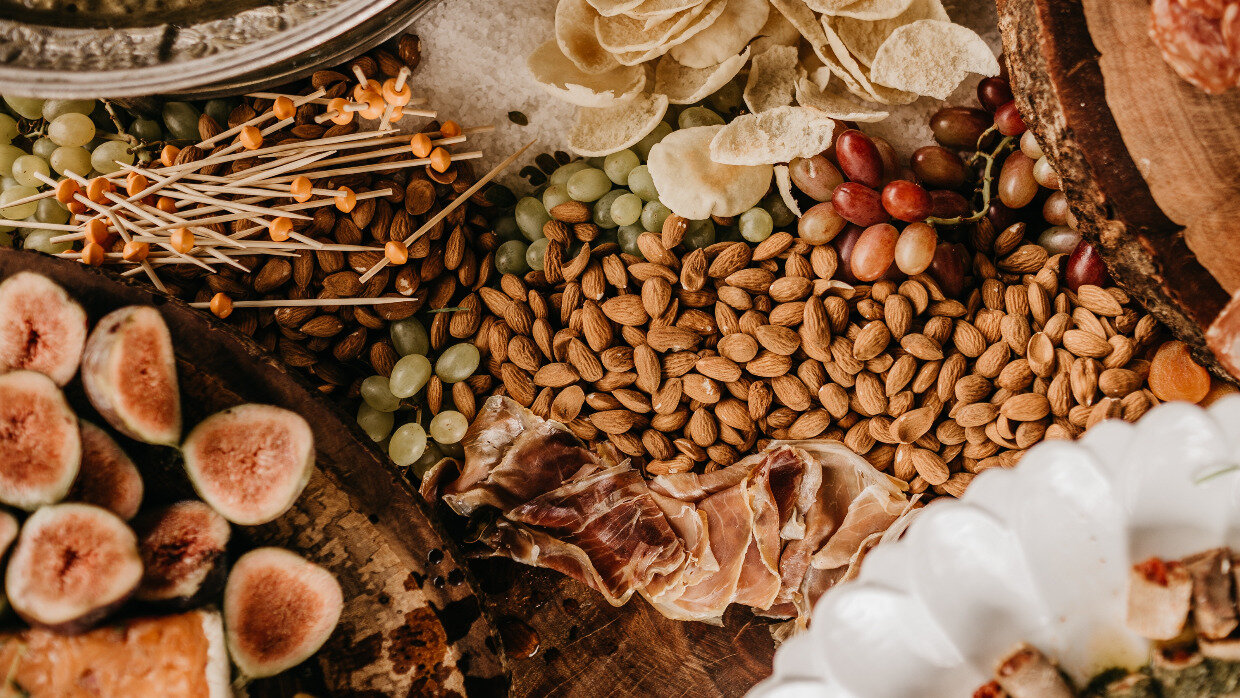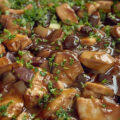When I first met my now husband, one of the things I quickly learned was that he comes from a huge extended family. His father’s side encompasses a large Iraqi family who moved to Israel from Iraq in the 1950s, and his now nearly 99-year-old Safta Farha reigns as the family matriarch where she has been blessed with numerous children, grandchildren, great-grandchildren, and even a great-great-grandchild.
There were many new traditions I came to learn from my Iraqi in-laws, but probably the most unexpected and special one surrounds their Tu B’Shvat gathering.
Tu B’Shvat is a Jewish holiday that’s generally a bit low-key and not as well known. It’s been called the “New Year of the Trees” and what some jokingly refer to as “Jewish Earth Day.” At most, it’s usually marked by some kind of activity involving nature, while others might do a small Tu B’Shvat Seder, where they eat fruits and nuts and say a few blessings.
But in the Ben Israel family, Tu B’Shvat becomes larger than life. Safta Farha and all of her descendants gather together for the day, where they do a little walk or hike, talk, and, of course…eat. And what they eat is just as special as the annual family reunion itself, a Middle Eastern stew called hareesa.
What is Hareesa?
Hareesa, also known as harees, is a wheat-based stew made throughout the Middle East, Armenia, and even India and can be translated in English to mash or “beaten wheat and meat.” It can be found in cookbooks dating back to the 10th century, and poetry was written in Iraq about the beloved stew as early as the 13th century. Variations of the dish involve lamb, meat, and chicken, all with a wheat base. While it started as a humble communal dish, it eventually evolved and has become traditional in some communities and homes for holidays like Ramadan, Armenian Easter, and of course…the Ben Israel family Iraqi Tu B’Shvat.
As my father-in-law pointed out, Tu B’Shvat is always in the winter when it’s cold…so why not include a hot comforting stew to warm up? But there are other possible explanations for this tasty dish on the holiday as well. Wheat is often associated with Tu B’Shvat because it’s one of the seven species mentioned in the Torah, which could be one explanation for why this stew became associated with the holiday. In some older communities, hareesa was prepared in the week leading up to Tu B’Shvat because of its proximity to Parshat B’Shalach, the Torah reading in which the Israelites received manna from heaven, which the book of Psalms refers to as wheat.
Making Hareesa
 The recipe my mother-in-law recorded, as told to her by Safta Farha.
The recipe my mother-in-law recorded, as told to her by Safta Farha.
Many, many years ago, it used to be Safta Farha, my husband’s grandmother, who made a large batch of chicken hareesa for the whole family on Tu B’Shvat, a tradition she learned from her husband’s family in Iraq. My mother-in-law recalled how Farha would keep an eye out for how many bowls were eaten, all for the satisfaction of feeding her family. But as time went on and Farha grew older, she no longer had the energy to prepare the stew, so instead, she chose to pass on the task to the next generation.
Farha individually taught her daughters and daughters-in-law how to make her hareesa, and now each one of them shows up to the annual Tu B’Shvat gathering with a big pot of it. There are some slight variations between the pots, but each one of them insists that they cooked it exactly the way that Farha taught them to, and Farha will never admit who has actually gotten her recipe 100% correct. Nevertheless, every one of them is delicious and comforting.
My mother-in-law explained to me that making the hareesa is a multi-day labor-intensive process, beginning with the soaking of the chickpeas and wheat grains on day one. The next day is when the cooking begins, and the chicken is cooked until it falls off the bone and the bones can be removed. Everything is stirred together frequently for a long time, and eventually, the spices are added, and the stew is put in an oven to cook overnight. In this aspect, it’s similar to other Jewish dishes like cholent, hamin, tbit, etc., that are often cooked overnight so they can be served for lunch on Shabbat.
Coming Together
 During the 2023 Tu B’Shvat trip.
During the 2023 Tu B’Shvat trip.
As the stew cooks overnight and everything comes together in the pot, so does my husband’s family. It can be almost overwhelming to see the large gathering of several generations altogether. From the moment I got engaged, my father-in-law told me, “You don’t realize it yet, but you just gained a gigantic family.”
Last year, after we had finished our hike and made our way back to my husband’s aunt’s house, we settled in for the hareesa, which did not disappoint. Sitting outside and filling our bellies with this stew while surrounded by numerous relatives was an experience unto itself. And lucky for me, it’s something I get to repeat year after year now.

















Very interesting article and if I recall correctly there’s been another article or two from this author in the past and I look forward to hopefully reading more from her unique perspective in the future.
What a great article!
A blessing to have such a traditional! Your turn to learn the recipe!